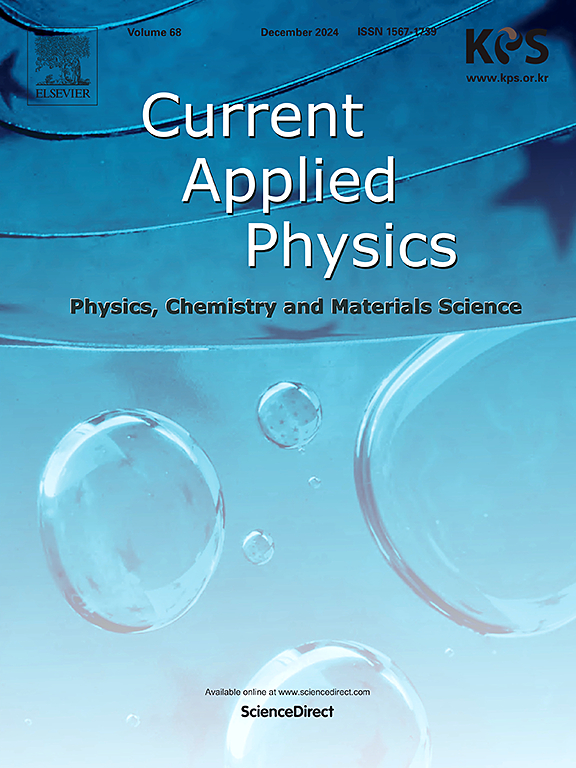基于碳纳米卷的存储电池
IF 2.4
4区 物理与天体物理
Q3 MATERIALS SCIENCE, MULTIDISCIPLINARY
引用次数: 0
摘要
提出了纳米机电存储单元的设计方案和工作原理。这些电池使用两个电极和第三个栅极,通过施加电压使碳纳米卷静电展开来工作。存储单元的工作依赖于两种稳定状态:不导电的关断状态(卷起的纳米卷)和导电的导通状态(部分或完全展开的纳米卷)。在分析存储电池能量学的基础上,计算了开关电压随电池尺寸的变化规律。对于两个电极电池,估计开关电压的下限约为5 V,对于具有第三个栅极的电池,估计开关电压的下限约为15 V。对于导致在On状态下完全展开纳米卷的细胞尺寸,返回到Off状态是不可能的。这些单元有望用于归档内存应用程序,并且确定了此类应用程序的最佳单元尺寸。本文章由计算机程序翻译,如有差异,请以英文原文为准。

Carbon nanoscroll-based memory cell
The scheme and operational principles of the nanoelectromechanical memory cells are proposed. These cells, which use two electrodes and a third gate electrode, operate by electrostatic unrolling of a carbon nanoscroll due to an applied voltage. Memory cell operation relies on two stable states: nonconducting Off state (rolled nanoscroll) and conducting On state (partially or fully unrolled nanoscroll). Based on the analysis of the memory cell energetics, the switching voltage between Off and On states is calculated as a function of the cell dimensions. The lower limit of the switching voltage is estimated to be about 5 V for two electrode cells and 15 V for cells with a third gate electrode. For cell dimensions that result in full nanoscroll unrolling in the On state, a return to the Off state is impossible. These cells are promising for archival memory applications, and the optimal cell dimensions for such applications are determined.
求助全文
通过发布文献求助,成功后即可免费获取论文全文。
去求助
来源期刊

Current Applied Physics
物理-材料科学:综合
CiteScore
4.80
自引率
0.00%
发文量
213
审稿时长
33 days
期刊介绍:
Current Applied Physics (Curr. Appl. Phys.) is a monthly published international journal covering all the fields of applied science investigating the physics of the advanced materials for future applications.
Other areas covered: Experimental and theoretical aspects of advanced materials and devices dealing with synthesis or structural chemistry, physical and electronic properties, photonics, engineering applications, and uniquely pertinent measurement or analytical techniques.
Current Applied Physics, published since 2001, covers physics, chemistry and materials science, including bio-materials, with their engineering aspects. It is a truly interdisciplinary journal opening a forum for scientists of all related fields, a unique point of the journal discriminating it from other worldwide and/or Pacific Rim applied physics journals.
Regular research papers, letters and review articles with contents meeting the scope of the journal will be considered for publication after peer review.
The Journal is owned by the Korean Physical Society.
 求助内容:
求助内容: 应助结果提醒方式:
应助结果提醒方式:


